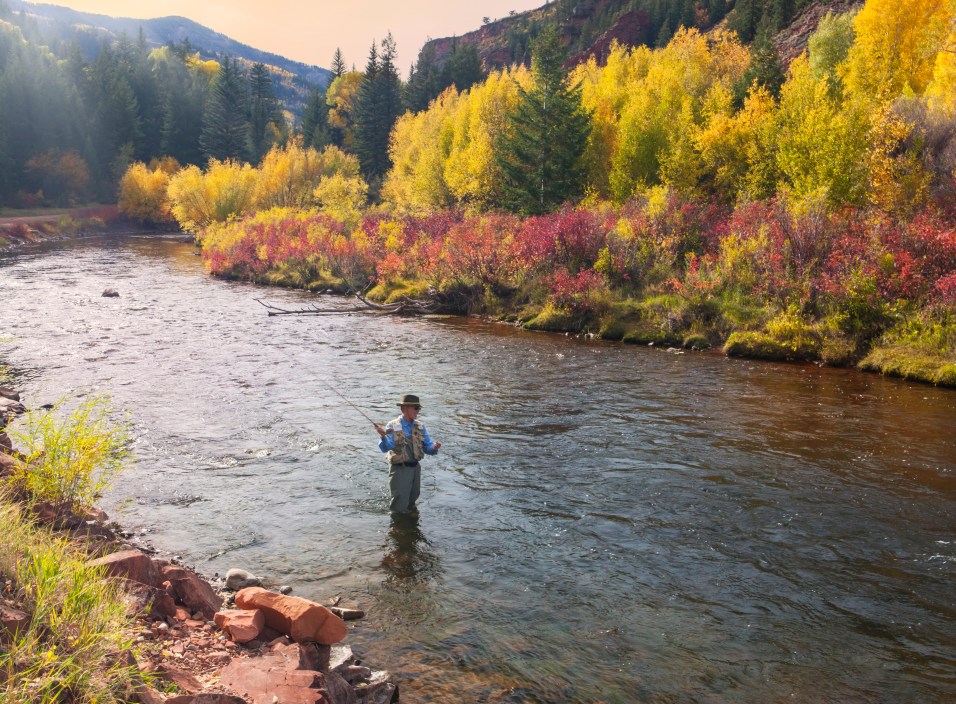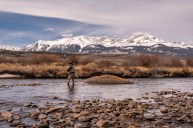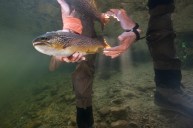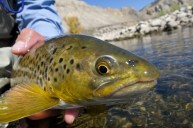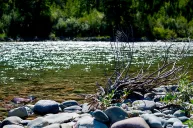Colorado is known far and wide for having some of the best trout fishing in the world. It's just one of those magical states with pristine mountain streams, lakes, and rivers that are teeming with rainbows, browns, and cutthroat trout.
The only hard part is narrowing down where in the state you want to fish. There are so many prime locations for large trout that it can be hard to pick just one or two.
Well, we're here to help: We've narrowed down a dozen destination spots to head with your fly rod.
These 12 fisheries have all earned Gold Medal Trout Waters designations, the state's top award for trout fisheries. The Colorado Parks and Wildlife Department issues the awards, and to qualify, the body of water needs consistently hit several benchmarks for fish stock and size: a minimum average of 12 trout over 14 inches per acre, and the river or creek must also support a stock of at least 60 pounds per acre.
So, the fishing is great but the icing on the cake is that some of these spots are also some of most beautiful places to fish, not only in Colorado, but in the entire Rocky Mountains. In other words: Most anglers come back happy whether or not they caught something with these idyllic views.
The Animas River
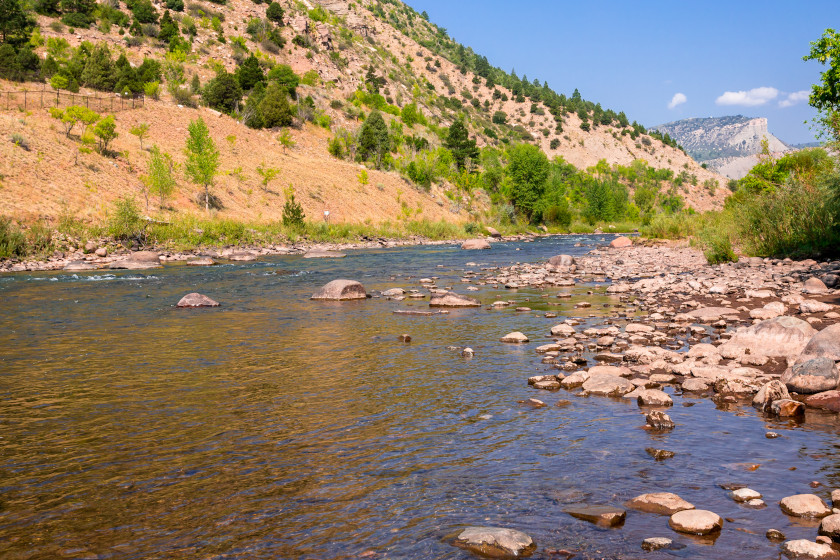
Strekoza2 via Getty Images
In 1765, when Spanish explorer Juan Rivera saw this river, he named it "El Rio de las Animas Perdidas en Purgatorio," Spanish for "The River of Lost Souls in Hell." There seems to be some confusion as to why he called it that, but we digress. This river is the ideal place for a fishing trip in the southwestern part of the state. Large boulders, deep pools and riffles in this river create the ideal habitat for loads of trophy trout.
The Animas River is a beautiful trout fishery surrounded by majestic mountains. The city of Durango has the best public access to the Animas River. Here, the river stretches 100 feet wide in some sections. That is where you'll also find the best concentration of guides and outfitters who are ready to put you on the bigger fish.
Gore Creek
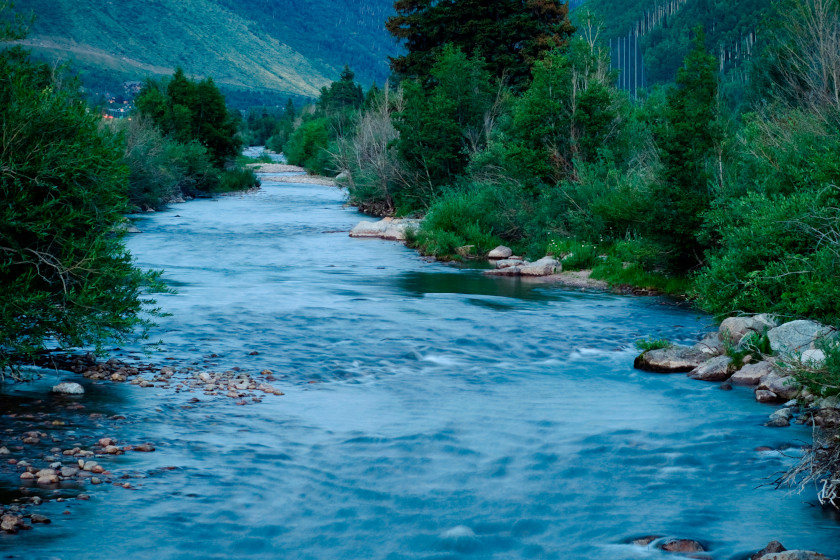
seanfboggs via Getty Images
Gore Creek is a small, tranquil mountain stream that offers great year-round trout fishing. Anglers often fish Gore Creek to complete the trout angler's Grand Slam: cutthroat, rainbow, brown, and brook trout. This one is up there in the mountains. The river drains out of the Rocky Mountains and sits at elevations over 7,700 feet. If the scenery and trout don't take your breath away, the thin air will.
Size-wise, it's nothing to write home about at around 18 miles long, but don't let that fool you. The trout fly anglers pull from it are usually big. Gore Creek starts high in the mountains at Gore Lake and flows down to the confluence with the Eagle River near Vail. The creek has two main fisheries: the Upper Gore Creek north of Vail, and the Lower Gore Creek just south of Vail.
North Platte River
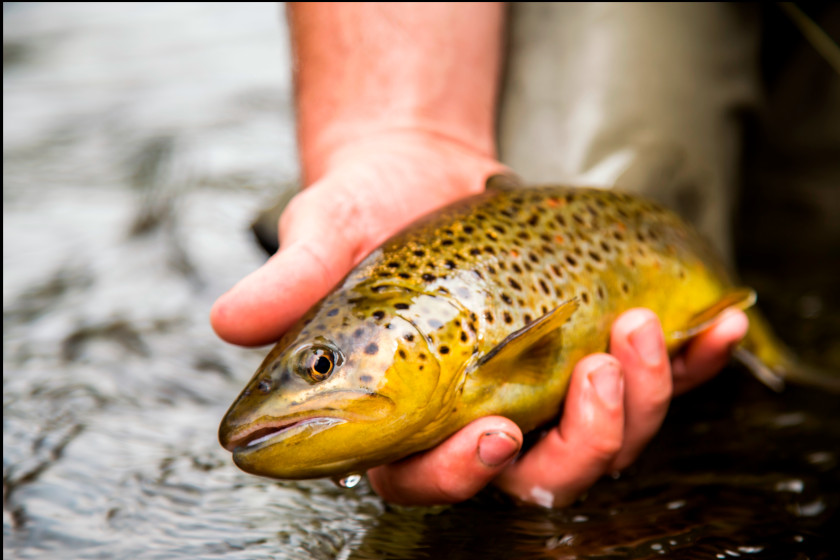
kvlazer22 via Getty Images
The Colorado section of the North Platte River is legendary for its fishing opportunities. The North Platte starts in the grassy meadowlands of North Park and flows hundreds of miles northwest to Wyoming. Only a small portion of this river flows through the Centennial State's borders, but it's an extremely popular stretch for fishing.
North Gate Canyon near the town of Walden is the Gold Medal Trout Water area. This section can only be accessed with a raft or kayak and has some of the best wild trout fishing in the West. That's mostly thanks to several major hatches throughout the warmer months. Keep your eyes on the shore while here as this river is a good place to run into a moose.
The Frying Pan River

Missing35mm via Getty Images
The Frying Pan River's weird name comes from a legend of a group of trappers who were once attacked by Native Americans along its banks. One of two survivors of the attack used a frying pan to mark where his severely injured friend was hiding in a cave so he could find it again when he returned with help. We're not sure if the story is true or not, but the name stuck and today the river is world renowned for its fly and lure trout fishing. As a bonus, it has tons of public access points for those wanting to take a DIY approach.
Colorado carefully manages this river to produce large impressive wild trout. In some sections of the Frying Pan, anglers can easily catch 10-plus pound rainbows. The Gold Medal Water section is between Ruedi Reservoir and the confluence with the Roaring Fork. Clear waters, monster trout and stunning mountain vistas make this the most popular sections of the river.
Roaring Fork
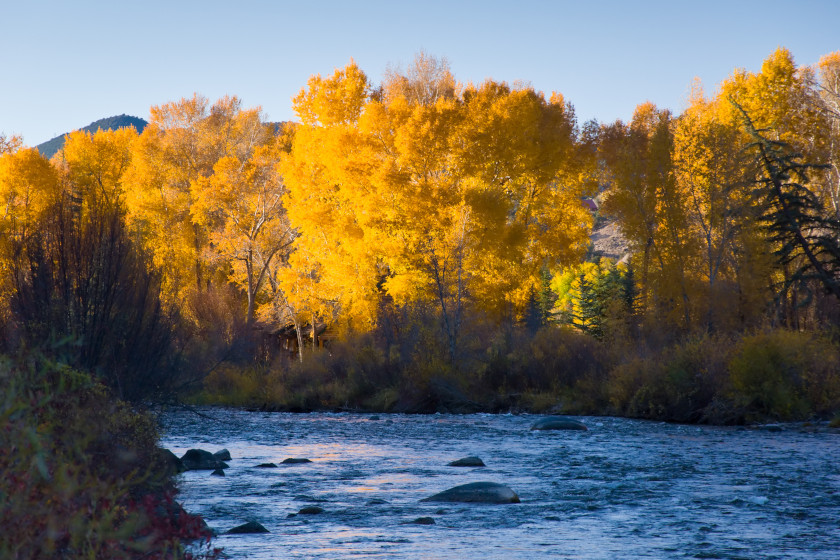
Adventure Photo via Getty Images
The Roaring Fork River flies a bit under the radar since it's a tributary of the larger Colorado River. It's also located close to the Frying Pan River which takes some of the attention. Which is a shame because this 70-mile stretch is one of the world's best trout fisheries. The upper section of is a winding high meadow stream, while the lower part is a raging free stone river. Only the strongest trout can survive the strong currents. As such, this river offers up some beastly fish. Anglers from all over the world come to the Roaring Fork river to catch trophy trout.
The South Platte River

A trout being landed on the South Platte River in Colorado.
The South Platte River is a tributary that begins in South Park and flows into downtown Denver. There are some fantastic sections of the river, but you almost can't go wrong no matter where you cast a line on this 439-mile stretch. During the spring migration, the Platte has loads of trophy spawners. But be warned, because of the proximity to Denver, it's also one of the most popular trout fishing destinations, especially on weekends when city anglers come out to wet a line. So, you may have to fight the crowds and do some serious searching for a spot unoccupied by others, but the effort is worth it when you find one.
North Delaney Lake
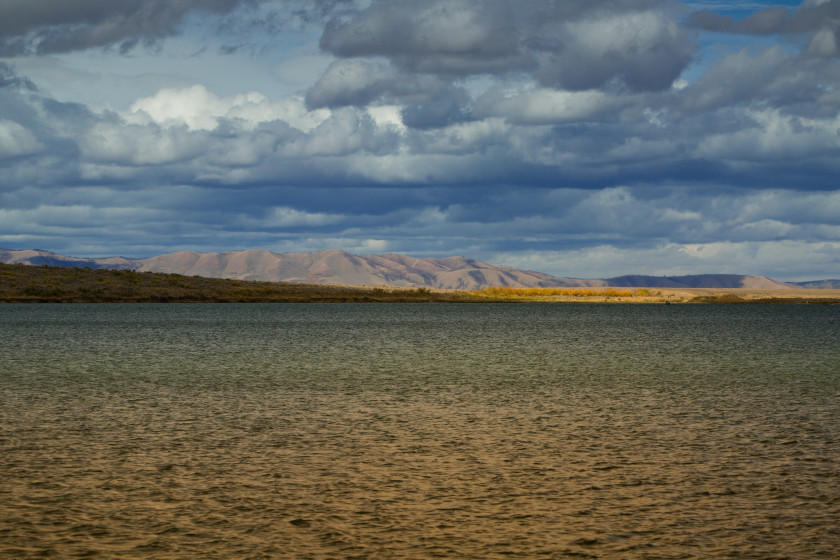
EntropyWorkshop via Getty Images
North Delaney Lake is one of three high mountain lakes in the Delaney Buttes near Walden, Colorado. The lakes are well known for their healthy brown trout populations, so much so, the state Division of Wildlife collects their eggs to boost the state's trout stocks. Although CPW also routinely does stockings of cutthroats, and rainbow hybrids.
North Delaney Lake boasts the Gold Medal Water designation and is easily the best fishery of three. Early summer is the time to catch the Damselfly hatch, although there are more hatches later in the summer that provide some good opportunities. CPW does have some special regulations for this lake that vary from the rest of the state, so be sure to read and know before you go.
The Gunnison River

Tyler Stableford via Getty Images
The Gunnison River has some of the best brown and rainbow trout fishing opportunities in Colorado. The scenery isn't bad either. Mostly because the Gold Medal Trout Water section of the river runs through the Black Canyon in Gunnison National Park. The canyon's steep walls were carved out by the river over the past two million years.
The roads leading into the canyon are steep and windy, but the fishing is worth it. In terms of visitors, the park only gets around 300,000 visitors annually, so it's one of the quieter National Parks you can fish. If you want even more solitude, considering getting a backcountry permit and hiking into the river along one of the inner canyon routes.
Rio Grande
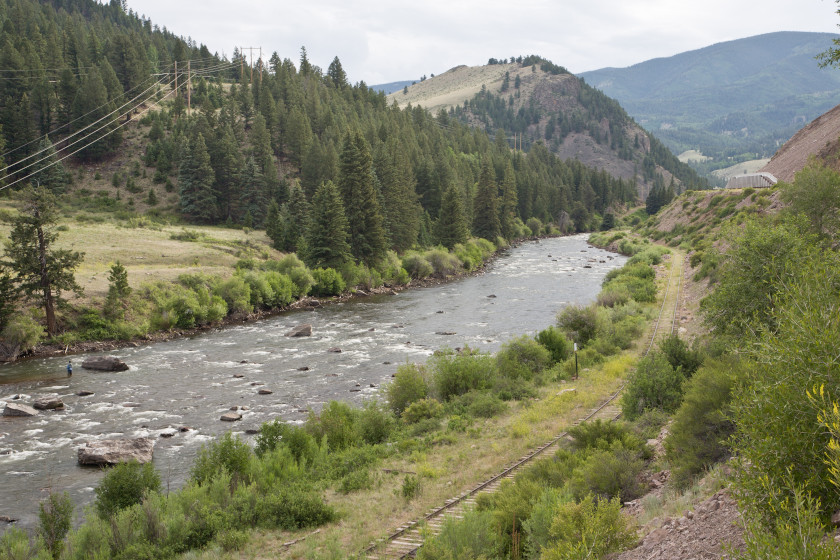
Austin Mirage via Getty Images
The Rio Grande is a giant at nearly 1,900 miles. In Colorado it flows south from the San Juan Mountain in southwest Colorado all the way through New Mexico, Texas, Mexico and into the Gulf of Mexico. Only a small portion of its overall length is in Colorado, but that stretch draws anglers from around the world. The Gold Medal Water section of this mighty river lies in San Juans between the towns of South Fork and Del Norte. Here, anglers have ample opportunities to catch trophy browns and rainbows. The best times to fish are from June through July, when the stone fly and mayfly hatches are in full swing.
Spinney Mountain Reservoir
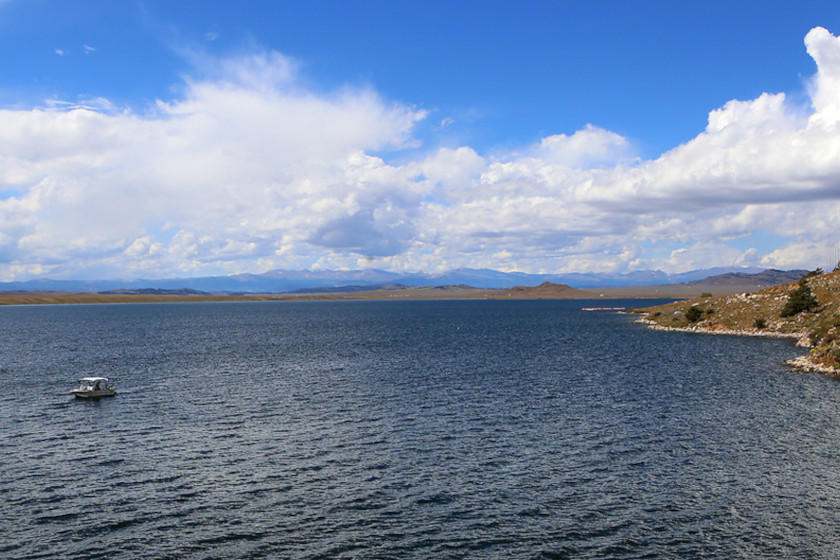
Spinney Mountain Reservoir covers approximately 2,500 acres and is one of the few Colorado reservoirs to earn a Gold Medal Water designation. This scenic lake has great shoreline, fly fishing, belly boating and trolling opportunities. Spinney Mountain consistently offers up trophy rainbows, cutthroat, and browns. The reservoir is wildly popular in the summertime, with the best fishing is in June. The lake does require a mandatory inspection of all trailers and boats upon entering and exiting the reservoir to protect against invasive hitchhikers like zebra mussels. This lake is also open on a seasonal basis. It normally closes sometime in November and stays closed through the winter until at least mid-April depending on the weather.
The Dream Stream
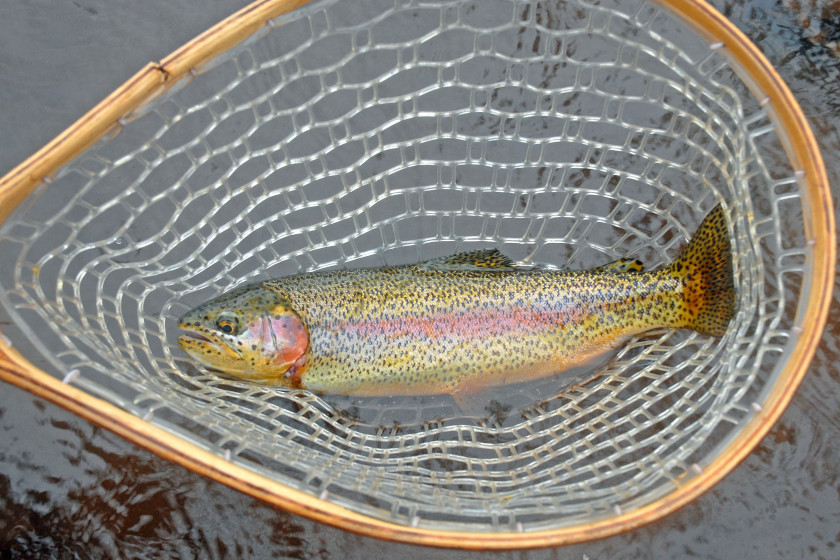
robertcicchetti via Getty Images
Though it's technically part of the South Platte (number 6 on the list), the Dream Stream deserves its own entry as a world class trout fishery. Also known as the Charlie Meyers Recreation Area, it's probably the best-known fly fishing spot in the state, so don't expect to have it to yourself. The surrounding desert prairie provides for clean casting lines without worry of snagging a tree. The downside is that it can get a bit cold since there's nothing to block out the winds. However, for the anglers who stick out the conditions, there are plenty of trophy rainbow, cutthroat, and brown trout.
Blue River
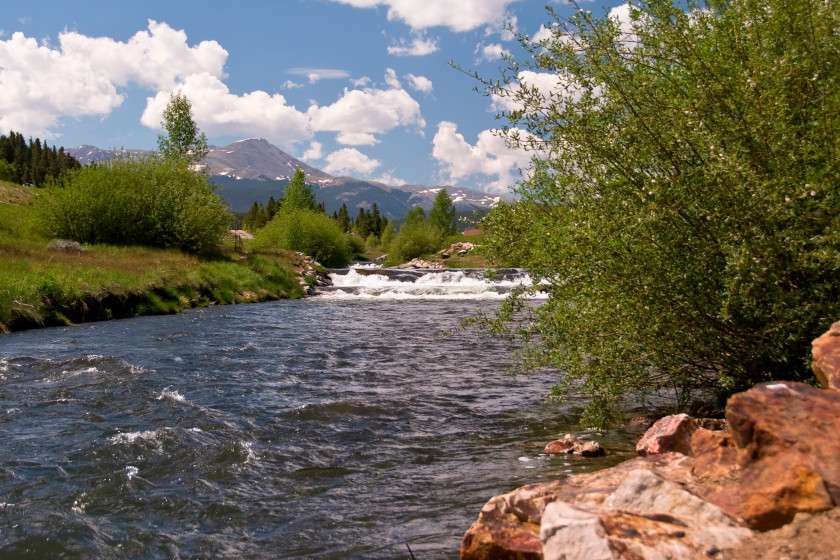
skibreck via Getty Images
The Blue River is another tributary of the larger Colorado River. This one is about 65 miles in length and starts in Hoosier Pass and flows North through Breckenridge to the Colorado River. This beautiful river boasts some excellent trout fishing spots. Expect rainbows, browns, and cutthroats depending on the season. The waters of the Blue River have produced a few 20+ pound rainbows in the past. You'll need to hunt for them, but they are there. The Gold Water section of the river is called the Tail Water, located below Lake Dillon. This stretch is where fly anglers frequently catch monster-sized trout on imitation flies.
READ MORE: 10 Best Trout Lures for Conventional Anglers, Gathered By a Serious Trout Angler
